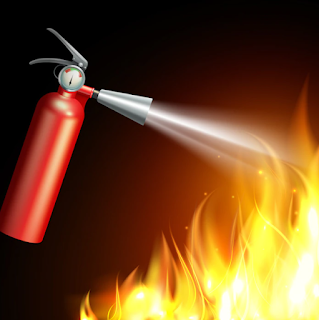Fire extinguishers are an essential component of fire safety. They are designed to put out fires quickly and efficiently, helping to minimize damage and prevent injuries. But how do fire extinguishers actually work? In this article, we will take a closer look at the science behind fire extinguishers and how they are able to extinguish fires.
First, it is important to understand the basic principles of fire. Fire is a chemical reaction that occurs when heat, fuel, and oxygen are present. The heat causes the fuel to break down into molecules that can react with oxygen, creating a chain reaction that produces heat, light, and gases. This chain reaction is known as combustion.
To put out a fire, it is necessary to interrupt this chain reaction by removing one or more of the three elements required for combustion: heat, fuel, or oxygen. Fire extinguishers use a variety of methods to accomplish this, depending on the type of fire.
The most common type of fire extinguisher is the pressurized water extinguisher. These extinguishers work by using water to cool the fire and remove the heat required for combustion. The water also helps to smother the fire by cutting off the oxygen supply. Pressurized water extinguishers are typically used for Class A fires, which involve combustible materials such as wood, paper, or textiles.
Another common type of fire extinguisher west palm beach is the foam extinguisher. Foam extinguishers work by creating a blanket of foam that smothers the fire and cuts off the oxygen supply. The foam also helps to cool the fire by absorbing the heat. Foam extinguishers are typically used for Class A and B fires, which involve combustible liquids such as oil or gasoline.
A Dry chemical extinguisher, uses a fine powder to smother the fire and cut off the oxygen supply. The powder also helps to cool the fire by absorbing the heat. Dry chemical extinguishers are typically used for Class B and C fires, which involve flammable liquids and gases.
Carbon dioxide extinguishers use carbon dioxide to smother the fire by cutting off the oxygen supply. Carbon dioxide extinguishers are typically used for Class B and C fires, as well as for electrical fires.
Finally, the clean agent extinguisher, uses a chemical agent such as halon or HFC-227 to smother the fire by cutting off the oxygen supply. Clean agent extinguishers are typically used for Class A, B, and C fires, as well as for electrical fires.
In conclusion, fire extinguishers are an essential component of fire safety. They work by interrupting the chain reaction of combustion by removing one or more of the three elements required for combustion: heat, fuel, or oxygen. Different types of fire extinguishers use different methods to accomplish this, such as using water or foam to cool the fire and remove the heat, or using chemicals to smother the fire and cut off the oxygen supply. It is important to understand the different types of fire extinguishers and how they work in order to choose the right one for your needs and be prepared in case of a fire emergency. Also, it's important to maintain them regularly, and to have them inspected and certified by professionals.

Comments
Post a Comment